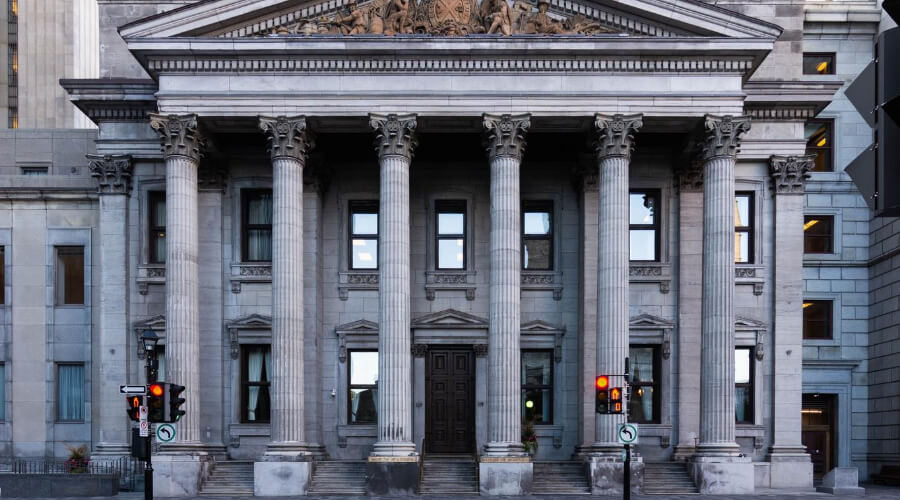In order to lend money to the borrowers, banks have to make money. Banks make money in various ways. The core of banks is to lend money and they first borrow money from depositors and then lend the money to borrowers with a higher interest rate. Banks also generate money through alternative financial services like investment banking, wealth management, etc. Other income sources of banks are capital market income, fee-based income, etc.
Key Takeaways
- Banks are the fundamental elements of an economic system and they serve to accept deposits and make loans
- Banks offer savings accounts, certificates of deposit, and checking accounts to the customers
- There are 6 main types of banks available and among them Commercial Banks is the most important one
- Central Banks is the most powerful bank of a country and it is owned by the government of the country
- The main sources of income for a bank are Interest income, Capital markets income, and Fee-based income
Definition Of A Bank

A bank is a type of financial institution that accepts deposits from the public and simultaneously makes investments to build up its reserve of money. Usually, a bank handles cash, credit, and other financial transactions. The bank works as a safe place for people to store their extra cash and credit. Therefore, banks offer savings accounts, certificates of deposit, and checking accounts to their users. Banks also offer various loans including home mortgages, business loans, and car loans. The banking sector is one of the key drivers of the economy of a country. It provides the liquidity which is required for families and businesses to invest in the future. Businesses use bank loans to meet future demands and increase production.
Types Of Banks
Over the years, different types of banks have developed and each bank type is specialized in a particular kind of business. So the types of banks are –
1. Commercial Banks: This type of bank has the most important in the modern economic system. Commercial banks are responsible for receiving deposits, giving loans, and financing the trade of a country.
2. Exchange Banks: This type of bank mostly finances the foreign trade of a country. The main activities of exchange banks are to discount, accept, and collect foreign bills of exchange.
3. Industrial Banks: Industrial banks are not common banks and usually they perform the function of advancing loans to industrial activities. Industrial banks provide the capital which is required for industries to buy machinery and equipment.
4. Agricultural Or Co-Operative Banks: The main purpose of agricultural or co-operative banks is to provide funds to farmers. This type of bank works on the cooperative principle. Agricultural banks provide short-term loans.
5. Savings Banks: These banks collect small savings to mobilize the savings of men of small means. The main mission of this type of bank is to encourage thrift and discourage hoarding.
6. Central Banks: Central bank is the main bank of a country and it controllers all other banks of a country usually this type of bank is owned by the government of the country.
Where Do Banks Get Money?

Banks act smartly when it comes to making money. They diversify their business mixes and generate money. Banks can do anything as long as that is legal to make money. So if you want to understand how the bank makes money then you have to know the main money-making strategies and they are:
1. Interest income
2. Capital markets income
3. Fee-based income
Interest Income
Interest is the main primary income of most commercial banks. Usually, banks collect money from people who do not need their money now. In return, the bank compensates the depositors with a certain interest rate and security for their funds. This way the banks collect a huge amount of money and then lend out the deposited funds to borrowers who need the money at the moment. The bank lends the money with a higher interest rate than what is paid to depositors. This way banks make a profit from the interest rate difference.
Clearly, the interest rate is important to a bank as it is the primary revenue driver for them. Moreover, the interest rate promotes a healthy economy and controls inflation. The interest rate depends on the long-term maturity debt instruments. If there is a high demand for long-term maturity debt instruments then it will lead to a higher price and lower interest rates. The opposite will happen if the demand becomes low. Banks have to manage the credit risk when lending money because there are chances lenders may potentially default on loans.
Capital Markets Income

Many banks provide capital market services for corporations and investors. The services that banks offer are:
1. Sales and trading services
2. Underwriting services
3. M&A advisory
Many banks have their own in-house brokerage services and help execute trades. Moreover, banks also employ dedicated investment banking teams to assist with debt and equity underwriting. This process is very important because assisting with raising debt and equity for corporations or other entities will generate profit for Banks. The team can also assist with mergers & acquisitions (M&A) between companies for a certain amount of fees. The capital market income is a very unstable source of income for banks and the income is purely dependent on the capital market’s activity. The capital market fluctuates significantly and so does the income of the bank.
Fee-Based Income
Bank charges various non-interest fees for their services. For example, when a depositor opens a bank account; the bank charges monthly/yearly account fees to keep the account open. Bank also charges various other fees like –
1. Credit card fees
2. Checking accounts
3. Savings accounts
4. Mutual fund revenue
5. Investment management fees
6. Custodian fees
Moreover, the bank also provides wealth management services for their customers, and by doing so they are also able to profit off of the fees for services provided. The bank also charges fees for certain investment products such as mutual funds. Many banks also offer in-house mutual fund services from which they also make money. Fee-based income sources are very profitable for banks because this type of income is stable and does not fluctuate over time. During economic downturns, various fees are the main source of a bank’s income.
FAQs About Where Do Banks Get Money To Lend To Borrowers
1. Do Banks Borrow Money From The Federal Reserve?
Usually, banks don’t borrow money from the Federal Reserve however, many commercial banks sometimes borrow money from the Federal Reserve before the end of the business day when the cash demand is high and their cash on hand is low. It helps the bank to get them back over the minimum reserve threshold.
2. Who Really Owns The Federal Reserve?
The Federal Reserve is not owned by anyone. The Federal Reserve was established in 1913 by the Federal Reserve Act and since then it is serving as the nation’s central bank. The Board of Governors in Washington, D.C controls the Federal Reserve and they are directly accountable to Congress.
3. What Do Banks Consider When Checking Out A Loan Application?
There are quite a few things that a bank considers when checking out a loan application. They are:
1. Purpose and intent of the loan
2. Collateral
3. Chance of paying back the loan
4. The investment risk of the loan
5. The granter, etc.
4. Can Banks Create Money Out Of Nothing?
Banks are financial arbitrators and they can’t create money out of nothing. However, they can create money through systemic interaction. In fact, the fractional reserve theory of banking has established that banks individually create money out of nothing.
5. Why Do Banks Borrow Money Overnight?
When a bank experiences a shortage or surplus of cash at the end of the business day usually lends money overnight. Lending money helps the bank maintain their reserve requirements and it also ensure that the banking system remains stable and liquid.
6. What Families Own The Federal Reserve Bank?
The Federal Reserve Bank is operated by a board of governors appointed by the President of the United States. However, the real control of the Federal Reserve Bank is still residing with the Rothschild family.
7. Can Anyone Start A Bank?
If you want to start a bank then you will need $12 million to $20 million as a starting capital. If you have that much amount of money then you can apply to regulatory agencies to open a bank.
8. How Commercial Banks Make Money?
Usually, commercial banks offer banking services to small to mid-sized businesses and they make money from loan interests. Commercial banks provide mortgage loans, auto loans, business loans, and personal loans. Commercial banks raise capital from the deposits made by their customers.
9. Are Commercial Banks Important To The Economic Growth Of A Country?
In the modern economy, commercial banks play a very important role and they help the economy grow rapidly. Commercial banks are a contribution to the economy by creating capital, credit, and liquidity in the market.
10. What’s The Richest Bank In The World?
The Industrial and Commercial Bank of China is the richest bank in the world. Moreover, it is also the largest bank in the world. This bank controls almost 1/5 of all banking in China. The Industrial and Commercial Bank of China has $4,913 billion total assets according to the latest data and its total market capitalization is $231 billion.
References: 1 https://www.investopedia.com/articles/basics/07/financing-options.asp
References: 2 https://www.rba.gov.au/education/resources/explainers/banks-funding-costs-and-lending-rates.html#:~:text=Banks%20collect%20savings%20from%20households,of%20their%20main%20funding%20costs.
Last Updated on October 18, 2022 by Magalie D.

Magalie D. is a Diploma holder in Public Administration & Management from McGill University of Canada. She shares management tips here in MGTBlog when she has nothing to do and gets some free time after working in a multinational company at Toronto.





